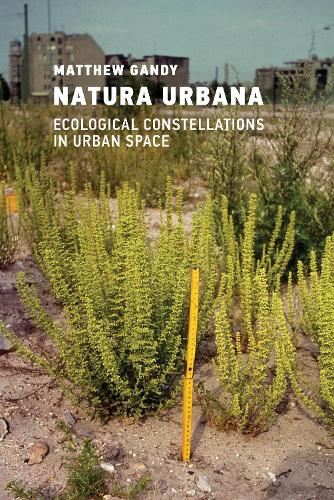
Natura Urbana: Ecological Constellations in Urban Space
(Paperback)
Available Formats
Publishing Details
Natura Urbana: Ecological Constellations in Urban Space
By (Author) Matthew Gandy
MIT Press Ltd
MIT Press
21st May 2024
United States
Classifications
General
Non Fiction
304.2
Physical Properties
Paperback
432
Width 152mm, Height 229mm
Description
Postindustrial transitions and changing cultures of nature have produced an unprecedented degree of fascination with urban biodiversity. The "other nature" that flourishes in marginal urban spaces, at one remove from the controlled contours of metropolitan nature, is not the poor relation of rural flora and fauna. Indeed, these islands of biodiversity underline the porosity of the distinction between urban and rural. In Natura Urbana, Matthew Gandy explores urban nature as a multilayered material and symbolic entity, through the lens of urban ecology and the parallel study of diverse cultures of nature at a global scale. Gandy examines the articulation of alternative, and in some cases, counterhegemonic, sources of knowledge about urban nature produced by artists, writers, scientists, as well as curious citizens, including voices seldom heard in environmental discourse. The book is driven by Gandy's fascination with spontaneous forms of urban nature ranging from postindustrial wastelands brimming with life to the return of such predators as wolves and leopards on the urban fringe. Gandy develops a critical synthesis between different strands of urban ecology and considers whether "urban political ecology," broadly defined, might be imaginatively extended to take fuller account of both the historiography of the ecological sciences,and recent insights derived from feminist, posthuman, and postcolonial thought. A study of urban nature that draws together different strands of urban ecology as well as insights derived from feminist, posthuman, and postcolonial thought. Postindustrial transitions and changing cultures of nature have produced an unprecedented degree of fascination with urban biodiversity. The "other nature" that flourishes in marginal urban spaces, at one remove from the controlled contours of metropolitan nature, is not the poor relation of rural flora and fauna. Indeed, these islands of biodiversity underline the porosity of the distinction between urban and rural. In Natura Urbana, Matthew Gandy explores urban nature as a multilayered material and symbolic entity, through the lens of urban ecology and the parallel study of diverse cultures of nature at a global scale. Gandy examines the articulation of alternative, and in some cases, counterhegemonic, sources of knowledge about urban nature produced by artists, writers, scientists, as well as curious citizens, including voices seldom heard in environmental discourse. The book is driven by Gandy's fascination with spontaneous forms of urban nature ranging from postindustrial wastelands brimming with life to the return of such predators as wolves and leopards on the urban fringe. Gandy develops a critical synthesis between different strands of urban ecology and considers whether "urban political ecology," broadly defined, might be imaginatively extended to take fuller account of both the historiography of the ecological sciences,and recent insights derived from feminist, posthuman, and postcolonial thought.
Reviews
"Drawing on decades of work and observation, especially in Berlin and London, and on a vast, almost spiralling, and beautifully connected theoretical framework assembled from a thought landscape that includes neo-Marxism, feminism, posthumanism and postcolonialism, Gandy seeks a 'critical synthesis between different strands of urban ecology and a variety of other postpositivist theoretical developments.'"
--Henriette Steiner, Journal of Urban Design
"Natura Urbana is a tour de force. It eschews the typical characteristics of academic monographs in a refreshing, dialectical, and original manner."--New Global Studies
Author Bio
Matthew Gandy is Professor of Geography at the University of Cambridge and the author of Concrete and Clay and The Fabric of Space, both published by the MIT Press.
